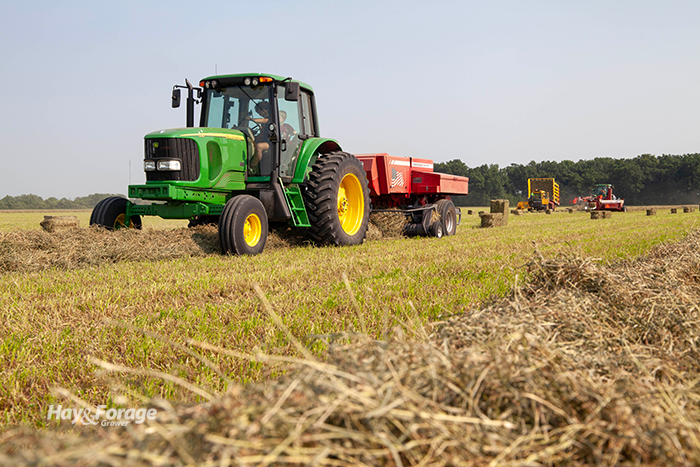
It’s typically large square and round bales that dominate the countryside, and for many years, major machinery manufacturers weren’t motivated to invest large resources into small square bale production. This trend may be changing, according to Kevin Shinners, emeritus agricultural engineer with the University of Wisconsin-Madison.
In a recent Forage Focus article from the Midwest Forage Association, Shinners notes, “We are now seeing the introduction of exciting new baler equipment and cutting-edge technology aimed at significantly enhancing baling productivity.”
Historically, small square balers have lagged in baling efficiency compared to large-package balers. Still, there remains a strong demand for small square bales in the equine, small animal, and export markets.
“To meet capacity demands, large-acreage farmers often resort to operating multiple (small square) balers simultaneously, thereby incurring additional costs stemming from extra tractors and labor,” Shinners explains. “While innovative twin-hitch systems from short-line manufacturers have aimed to address this issue by enabling the operation of two small square balers with a single tractor, their compatibility with smaller fields may be limited.”
Many small square bale customers are extremely selective about the hay that they purchase. Bales must meet a certain quality and visual standard. They often must also have a consistency in shape, length, number of flakes, and weight. “While numerous factors influence these physical characteristics, ground speed and plunger frequency play pivotal roles in producing uniform bales,” Shinners says. “Increasing productivity by simply driving faster is feasible if the baler can handle large volumes. However, this approach, while boosting throughput, can compromise bale uniformity by increasing flake thickness and reducing flakes per bale, thereby affecting bale length consistency.”
The ag engineer notes that most small square balers operate at 90 to 100 strokes per minute, but a newcomer to the market promises a 120 strokes per minute plunger frequency. “This should elevate throughput by 20% to 33%,” Shinners explains. “Advancements such as a longer bale chamber, larger flywheel, and hydraulic chamber pressure systems have contributed to enhancing consistent bale shape.”
New operational systems on balers can measure flake count, bale length, chamber pressure, bale weight, and hay moisture. These systems are able to automatically adjust chamber pressure to ensure uniform bale weight and optimize flake count.
Double your pleasure
A recent introduction to the small square baler market has been the “double” baler. These machines offer the simultaneous production of two 14- by 18-inch bales. The only currently available commercial model is equipped with a double-width bale chamber and plunger with a stationary knife to cut the bale into the desired width.
Shinners explains that the productivity is enhanced further because the double baler uses a pick-up and feed system modeled from a large square baler. It’s expected that a second double baler from a different manufacturer will soon hit the market.
“The double small square baler retail price is comparable to that of a large square baler, indicating they are primarily targeted at large commercial hay operations,” Shinners notes. “Since bale size is not different from conventional single balers, downstream operations and costs remain largely unaffected. Primary cost benefits stem from increased productivity,” he adds.
According to Shinners, current projections suggest the capacity of the double small square balers should be equivalent to three conventional single balers. Cost reductions arise from the use of two fewer tractors and the elimination of two operators. More experience and data are needed to make estimates regarding the annual number of bales necessary to justify the cost of investing in a double baler.
In addition to new baler technology, there are also new and innovative pieces of equipment to gather and bundle small square bales. “These advancements can significantly reduce labor requirements and boost the productivity of downstream hay operations,” Shinners asserts. “After decades of stagnation, there is now robust development in machines and technology utilized to create and handle small square hay bales.”

